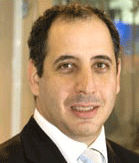
Current movements in global petrochemical industry
To begin with, we would request your views on performance of Brazil in the global petrochemical industry? How has Braskem positioned itself in this sector?
Brazil has been experiencing a strong increase of the demand for plastics in the late years, due to better economic policies, better income distribution and political stability. The petrochemical market follows the good moment of brazilian economy. Besides, the sector is now consolidated in Brazil. Braskem will play a leading role in the region and has several plans of expansion, such as the JV with PDVSA in Venezuela, a ethanol based Polyethylene plant and a new polypropyelene unit. As other parts of the world, the current challenge is the increasing prices of crude and feedstocks.
Can you let us know about the market share that synthetic fiber sector embarks in petrochemical industry worldwide? What is Braskem stake in this sector?
CMAI establishes synthetic fiber, in general, as responsible for 15% of the worldwide polypropylene demand in 2008. The forecast for the next years (2009–2012) is the maintenance of this market-share.
Braskem has a large participation on this sector with partnerships on nonwoven and fiber. Moreover, the synthetic fiber sector embarks 17% of participation on Braskem sales.
Decline of the dollar accompanied with global crude prices are flaring issues today. How do you see the aftermath of this situation?
Petrochemical business will have to adapt to this new scenario with high crude prices. We believe that less competitive worldwide units will be shutting down or reducing output as new capacities come onstream. Prices will be naturally set to a new plateau, but with lower margins for the next years.
The textile fiber industry is shifted to Far East as a result of the emergence in recent years in the market. Will petrochemicals follow the example of textile fibers?
The fiber industry shifted to Far East is based on polyester. For polyolefins, we believe in a different dynamics. The most competitive feedstock will be in Middle East and other regions such as Russia and Venezuela. Therefore, it is reasonable to conclude that petrochemicals, more precisely polyolefins, will be set next to those sources of raw materials: Middle East.
How promising is the Nonwovens sector in terms of market potential?
Although being a segment with high growth rate and with a big market potential, nonwoven is based on exports of final product to USA.
The petrochemicals business is the upstream supplier of raw materials for the synthetic fiber and textile industry. What is your reading about the future market?
The future market can be considered the beginning of a tough cycle in which the prices of feedstock will increase, squeezing the margin of petrochemical industry.
Nowadays, the crude reaches the price of USD 140/barrel, setting a challenging scenario to petrochemicals business. On the other hand, we believe in an increasing market for fibers for several applications, such as diapers.
Announcements on investments of more than R$ 1.0 billion by Braskem in Rio Grande do Sul are in the air these days. Can you share the rationale behind this venture?
These investments are the pillars of the Braskem’s strategy plan of growing and show the commitment with the development of all the petrochemical value chain.
Part of this venture will be employed on the cracker expansion, on the implementation of the first Braskem green polyethylene plant and further improvements on the polymer plants.
"Global warming" issue is heating up. What efforts are made to contribute towards global league to prevent it?
Recently, Braskem announced the development of the first 100% biomass based certified polyethylene in the world, from sugarcane ethanol. The production of this PE will provide the capture of 2,5 ton of CO2 for each ton of PE. This unit will start up on 2010, with a capacity of 200,000 metric ton/year. Besides of that, since 2005 Braskem has been investing in its Clean Development Mechanism projects, in accordance with the guidelines of the Kyoto Protocol, which establishes that countries (and local companies) classified as major emitters of greenhouse gases meet the target of cutting their emissions from 1990 levels by 5.2% between 2008 and 2012. The reduction in emissions is encouraged by the financing of projects aimed at achieving this reduction, or through the purchase of credits for carbon dioxide, a greenhouse gas.
Published on: 28/07/2008
DISCLAIMER: All views and opinions expressed in this column are solely of the interviewee, and they do not reflect in any way the opinion of Fibre2Fashion.com.